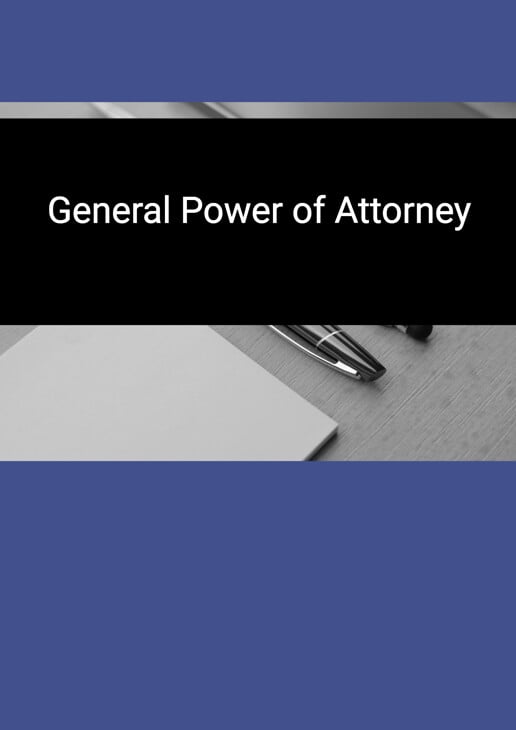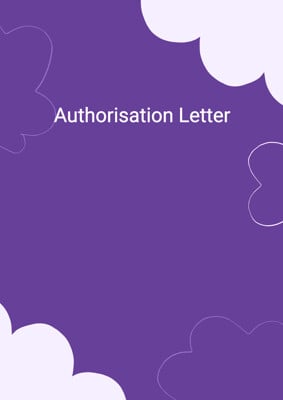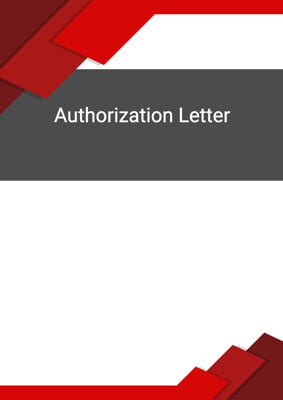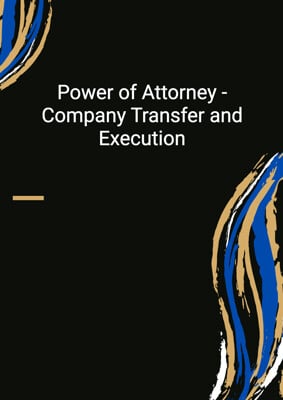How to Tailor the Document for Your Need?
01
Create Document
Fill in the details of the parties. You can click the "Fill with Member’s Information" button to complete it with information saved to your account.
02
Fill Information
Please fill in any additional information by following the step-by-step guide on the left hand side of the preview document and click the "Next" button.
03
Get Document
When you are done, click the "Get Document" button and you can download the document in Word or PDF format.
04
Review Document
The document should be signed by the authorised signatory (or directors of a company) and witnessed to complete the formality.
Document Preview
Document Description
The General Power of Attorney is a legal document that grants the attorney the authority to act on behalf of the principal. It is an important document as it allows the attorney to make decisions and perform actions on behalf of the principal, especially in situations where the principal may be unable to do so themselves.
The document begins with a title, 'General Power of Attorney,' which clearly indicates its purpose. It then states that the power of attorney is made on the current date by Party 1, providing the name and address of Party 1. The principal appoints Party 2, providing the name and address of Party 2, as their attorney.
The document specifies that the attorney is authorized to do all acts and things, as well as execute and sign all deeds and documents, which they consider necessary or advisable in connection with the powers granted. The powers granted are not explicitly mentioned in the document, but it is implied that they are broad and encompass a wide range of actions.
There is a provision regarding the duration of the power of attorney. If the power of attorney is irrevocable, it remains in effect for a specified period of months from the execution date. If it is revocable, it also remains in effect for a specified period of months from the execution date but can be terminated before that date.
The document states that acts done and documents executed or signed by the attorney in good faith during the specified period are valid and binding on the principal and its successors and assigns. This ensures that the actions taken by the attorney on behalf of the principal are legally recognized.
If the principal has agreed to indemnify the attorney, it is mentioned in the document. The principal undertakes to indemnify the attorney and their agents against any actions, proceedings, claims, costs, expenses, and liabilities arising from the exercise of the powers conferred by the deed during the specified period.
The document specifies that it is permitted by the principal's constitutional documents, indicating that it is in compliance with the principal's governing rules or regulations.
There are general provisions regarding the interpretation of terms, stating that 'person' includes corporations and unincorporated bodies of persons, and that singular includes plural and vice versa. It also clarifies that the masculine gender includes the feminine and neuter genders and vice versa.
The document is governed by the laws of the jurisdiction state, ensuring that it is subject to the legal framework of the relevant jurisdiction.
Finally, the document is executed and delivered by Party 1, with space provided for their signature, and witnessed by an individual who signs and provides their name, title/occupation, and address.
How to use this document?
1. Determine the need for a General Power of Attorney: Assess whether there is a need for someone to act on your behalf in various matters, such as financial or legal decisions, in case you are unable to do so yourself.
2. Identify the parties: Clearly identify the parties involved in the document, including the principal (Party 1) and the attorney (Party 2). Ensure that their names and addresses are accurately provided.
3. Understand the powers granted: Although the document does not explicitly mention the powers granted, it is important to have a clear understanding of the broad authority given to the attorney. Consult legal advice if necessary.
4. Determine the duration: Decide whether the power of attorney will be irrevocable or revocable. If irrevocable, specify the term in months from the execution date. If revocable, also specify the term but note that it can be terminated before that date.
5. Consider indemnification: If the principal agrees to indemnify the attorney, ensure that this provision is included in the document. This protects the attorney from any legal actions or liabilities arising from the exercise of the powers granted.
6. Review constitutional documents: Confirm that the document is permitted by the principal's constitutional documents, ensuring compliance with any governing rules or regulations.
7. Interpretation of terms: Understand the general provisions regarding the interpretation of terms, such as the definition of 'person' and the inclusion of different genders and plural forms.
8. Applicable laws: Be aware that the document is governed by the laws of the jurisdiction state. Familiarize yourself with the legal framework to ensure compliance.
9. Execution and delivery: Sign the document as Party 1 and have it witnessed by an individual who signs and provides their name, title/occupation, and address.
10. Keep a copy: Make sure to keep a copy of the executed document for your records and share copies with relevant parties as necessary.
Not the right document?
Don’t worry, we have thousands of documents for you to choose from:
























